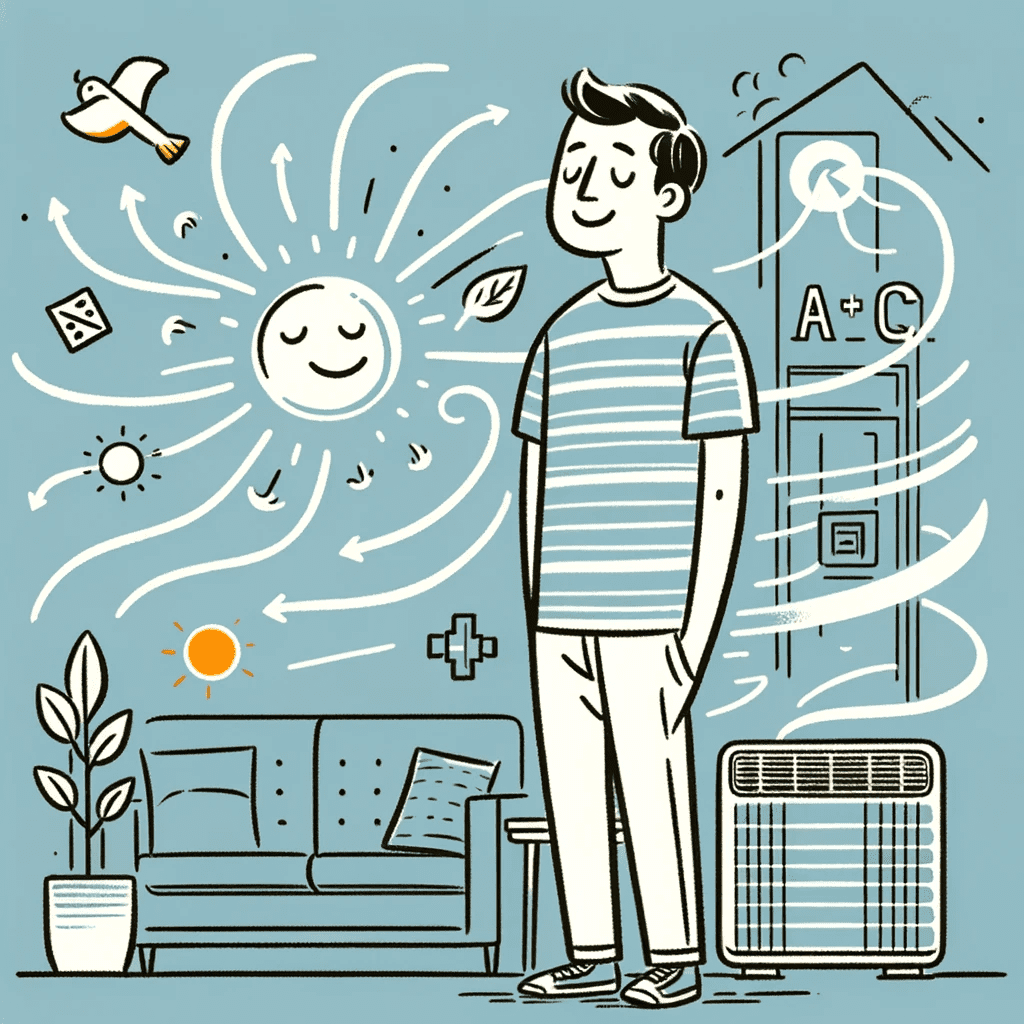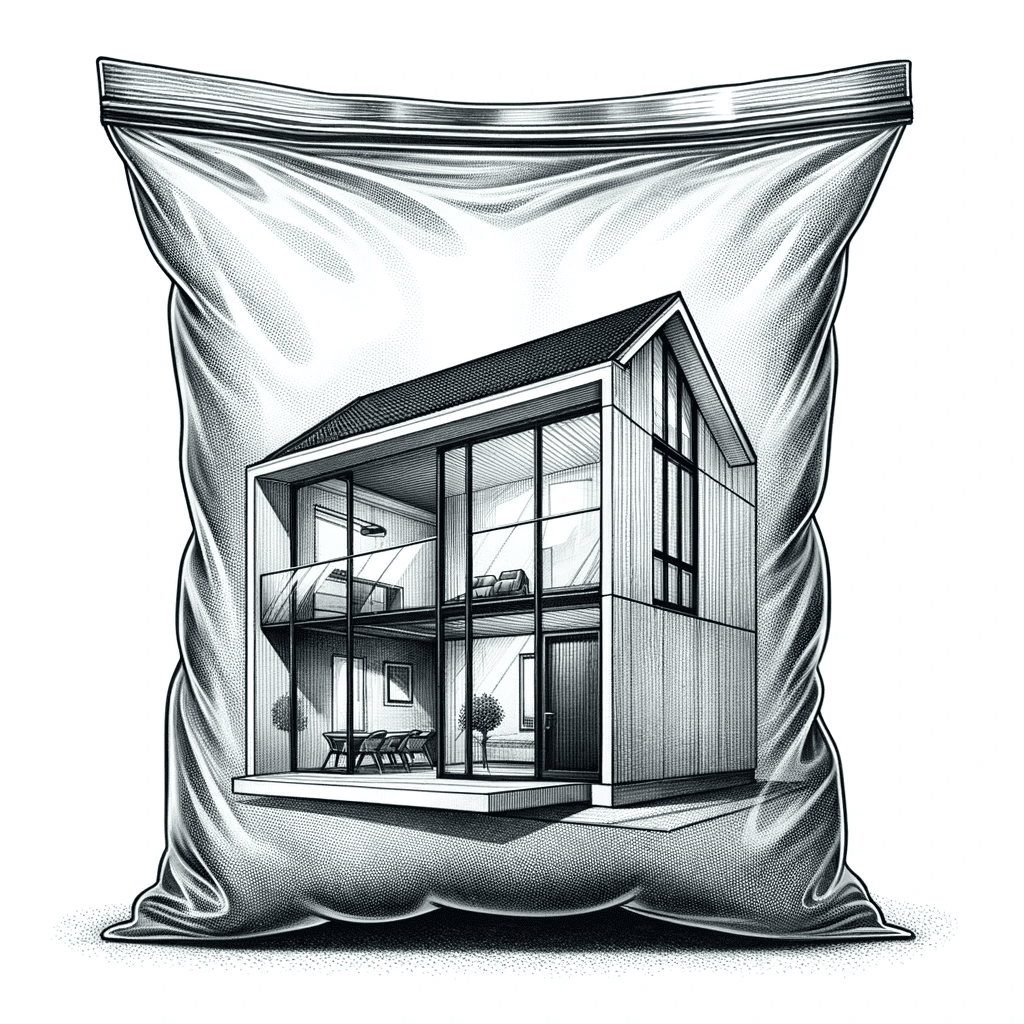June is officially National Healthy Homes Month! This month-long recognition offers the perfect opportunity to learn more about what constitutes a healthy home. Stocked with greater awareness and information, you can choose if and how to actively intervene in your living space, and what to advocate for, for healthier homes across the country. Healthy housing should be accessible to all. Learn how to both create and maintain healthy homes—particularly through indoor air quality solutions—and the purpose of National Healthy Homes Month.
National Healthy Homes Month
America first observed National Healthy Homes Month (NHMM) in 2016. The purpose of the month-long awareness event is to:
- Increase awareness of housing-related health hazards, lead poisoning prevention and the overall principles of a healthy home, especially for low-income populations
- Encourage residents to take the actions and steps for safe and healthy homes
35 million homes across America suffer at least one health or safety hazard. There is a great need to generate greater awareness and advocate for long-term solutions that will provide healthier housing for all persons. NHHM also aims to present no-cost or low-cost strategies and solutions that help create healthy homes. 2021’s NHHM theme is The Power of Partnerships, which highlights how partnerships are necessary to ensure healthier homes nationwide.
 NHHM 2022: What about Healthy Homes Month 2022? This year’s theme is “A Healthy Home at Any Age.” Learn more →
NHHM 2022: What about Healthy Homes Month 2022? This year’s theme is “A Healthy Home at Any Age.” Learn more →The Office of Lead Hazard Control and Healthy Homes (OLHCHH), a division of the U.S. Department of Housing and Urban Development (HUD), organizes NHHM. If you weren’t aware of HUD’s division that specializes in lead hazard control and creating healthier homes—you’re certainly not alone. You are, however, likely aware of the significant health threats lead exposure presents. Lead is a health risk for both adults and children. On average, lead exposure affects over 500,000 children in America each year.
Lead-based paint and lead dust are the primary sources of indoor lead poisoning. Homes built before 1978 likely contain lead-based paint. It’s particularly important to assess older homes for lead paint because exposure can occur even if the walls have long since been painted over with non-lead paint. And that goes for all homes regardless of structure—apartments, condos, houses, living facilities, etc.
What Are Healthy Homes?
A healthy home is one that provides occupants with a safe and sanitary space that helps prevent against disease and injury. Therefore, there are numerous factors that contribute to healthy housing. Areas of concern range from physical hazards, chemical exposure, housing access and affordability and of course—air quality. It is well established that the indoor spaces one occupies greatly impact their overall health and wellbeing. And indoor air quality is a significant piece of overall indoor environmental health. Creating a healthy home is particularly crucial considering the average amount of time clocked indoors—a whopping 90%!
Relationship Between Housing and Health
Poor housing conditions and substandard housing, including poor indoor air quality, are associated with numerous health risks and ailments. Again, there are many different factors that impact how and why one’s housing affects their health. Nevertheless, IAQ is a significant factor that can and should be addressed. Indoor air quality includes the presence of contaminants and pollutants indoors, ventilation rates and HVAC system efficiency. All of which, if poor, leads to developing or worsening respiratory symptoms and chronic health conditions, as well as poor mental health and an overall higher risk of illness and serious disease. Household air pollution is also a notable contributor to premature death.
Connection between health and air quality? You bet.
— IAQ.Works (@IaqWorks) June 12, 2021
3.8 million people die prematurely from household air pollution every year. #iaq #airpollution
8 Principles of a Healthy Home
The OLHCHH outlines eight healthy home principles, all of which help make the home a safer and healthier living space. The healthy housing principles are:
- Dry
- Clean
- Safe
- Well-Ventilated
- Pest-Free
- Contaminant-Free
- Well-Maintained
- Thermally Controlled
There are many ways to both achieve and maintain all eight of the healthy home principles! Equally important … there are options available for every climate, every budget, every locale, every home structure and every space—including yours.
Looking at the eight healthy housing goals, hopefully, the correlation between health and indoor air quality is clear. Thankfully, when it comes to improving indoor air quality, there are also strategies available for every budget and every space.
Healthy Housing: The How-To
We have a few quick suggestions to best address the housing-health relationship to ensure a safer and cleaner home for you and your family.
1. Consider Home Assessments & IAQ Testing
One of NHMM’s important goals is to generate a greater understanding of just how important routine home assessments are for human health. Similar to indoor air pollution, a majority of serious indoor health threats are not visible to the naked eye. Hazards such as radon, lead and particulate matter will require professional indoor testing to determine indoor levels. Pests like cockroaches and dust mites or risks such as mold and mildew growth can hide in the dark damp corners, going unnoticeable for years. The fix? Actively monitoring your space’s indoor air quality and hiring an experienced home service, HVAC or IAQ professional to determine your home’s pain points and how to resolve the issues for healthier housing.
2. Intervene With Healthy Home Habits
Healthy home habits are incredibly easy. These are low-effort and low-cost tips and tricks. To put it simply, healthy home habits are simple steps we suggest completing routinely. That is, to literally make it a part of your daily or weekly practices and chores. From not wearing shoes indoors to grooming the pets regularly, there are plenty of source control measures to choose from.
 Healthy Home Habits: Don’t know where to start with source control? Check out these quick seven healthy home tips to turn into habits →
Healthy Home Habits: Don’t know where to start with source control? Check out these quick seven healthy home tips to turn into habits →3. Intervene With IAQ Control Solutions
The previously listed eight healthy home principles can be made easier, much easier for homeowners. Choosing to pursue home upgrades or utilize indoor air quality control solutions will not only help create a healthier home, but it’ll also take a lot of the guesswork and maintenance out of the equation. Looking at the list here are a few notable options. Installing a whole-home dehumidifier will keep the space dry and pest-free, or choosing a whole-home mechanical ventilation system will help keep your home well ventilated.
IAQ control strategies effectively target contaminants, pests, airflow and temperature issues throughout the home. Also, many IAQ control solutions can achieve multiple healthy home principles at once. And to keep with NHHM’s goal of providing no-cost and low-cost options … choosing to upgrade your home air filter is a low-cost step. It’s also a super easy upgrade and makes a noticeable difference in home health and indoor air quality!
4. Support Actions and Policies That Create Healthy Housing
Finally, to ensure healthier homes nationwide, another option is to support or advocate for actions and policies that lead to healthier homes. This step might sound a bit lofty, but the conversations are occurring and the resources are out there! Simply taking interest in National Healthy Homes Month is an example! Having a better understanding of how our indoor spaces impact human health and wellness is truly what it’s all about. NHHM also offers free resources and webinars to attend for more information and to get involved locally. Also, as a final final tip, find out how your state compares regarding healthy housing provisions!
Ensuring Healthy Housing
Creating a healthy home is, of course, a year-round concern and can require year-round action. National Healthy Homes Month simply offers a period of recognition where healthy housing can be in the public’s eye. There has never been a more relevant time to become your own expert on healthy housing than now! The focus on environmental health isn’t going away, learn how to best intervene in your space and take steps to create a healthy home today.





